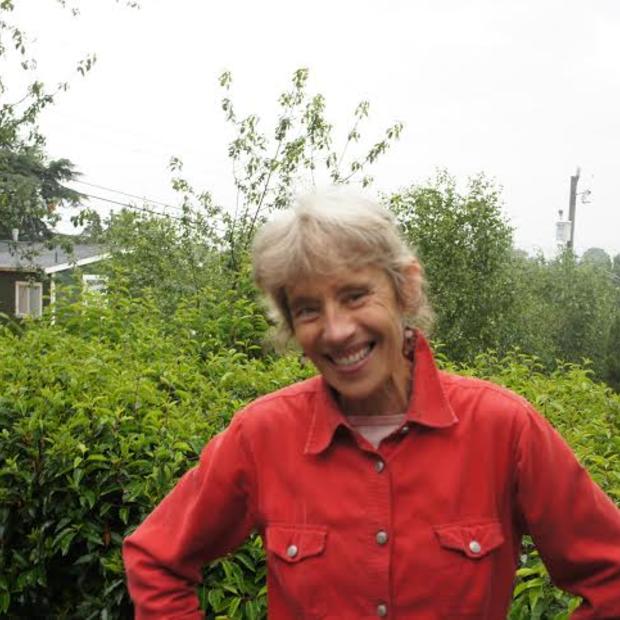Introduction: As oceans absorb evermore carbon dioxide, pH levels of the world’s seas have been dropping. Biologists at the National Marine Fisheries Service in Seattle are doing some of the most sophisticated work anywhere to see how the marine world responds to a major side effect of fossil fuel emissions, increasingly corrosive seas. Green Acre Radio recently joined scientists on a research vessel in Puget Sound.
Click on the audio player above or here to listen.
Narration: Marine ecologists tug at drift nets full of fish from one of the world’s most corrosive bodies of water, Puget Sound. Jelly fish and crab wait to be disentangled and microscropic krill and zooplankton. undistinguishable to the untrained eye, but the base of the food web. “We've got quite the catch.” Correigh Greene and his team of fish biologists with the National Marine Fisheries Center. “Quite a few fish. few jelly fish too.” The task is to measure not only the abundance of marine life — the majority of species will then be released — but levels of carbon dioxide.
As oceans absorb more and more carbon dioxide or CO2 they become acidic and their pH levels drop. PH is the concentration of hydrogen ions which results from dissolved carbon. Today’s global average is 8.1, a 29% drop from pre-industrial times. But some waters in Puget Sound register 7.4. “These near shore conditions are much less understood. but in a lot of ways they’re more important because this is where a lot of the biological activity takes place.” Ecologist Paul McElhany says near shore environments and estuaries are critical to the food web. “They’re the nurseries because it’s where a lot of the larval fish are produced and rear before they head further into the ocean to mature.”
When baby shellfish failed to grow five years ago along the coasts of Washington and Oregon, scientists with the National Marine Fisheries Service began looking at ocean acidification. Were acidic waters preventing shells from calcifying? They brought the larvae of shellfish and oysters into the lab and experimented with pH levels. Now they hope to measure pH levels in the waters where animals actually live. Again Paul McElhany. “There’s been this snapshot look at CO2 but here we’re trying to look at these realistic measurements of pH so we can know the environment that they’re experiencing. We can then go back to the lab and relate our experiments to what the animals currently see and then project forward.”
The study is the first of its kind in a coastal environment. It all begins with a pH probe, one calibrated to accurately measure conditions of seawater. A small white gadget hangs suspended from a line over the boat. Meanwhile the crew lower a cylinder shaped net that will initially absorb water on the surface and then be deployed under water for the length of the entire water column. Again Paul McElhany. “With this measurement we can get a different measure of pH. the probe we have over the side that we’re taking continuous measurements is at a fixed depth and its relatively shallow so we’re trying to correlate that with the animals that are in the shallow depths.” Animals like zooplankton and krill, food for fish.
There are many factors that affect abundance of species including development and industry, pollution, food availability, temperature and whether the water flushes or remains stagnant. This makes it a challenge to tease out the pH effect. Again fish biologist, Correigh Greene. “Because in Puget Sound you have places that flush quite a bit and then you’ve got places where you have problems with the water just staying around.” Algae build up is another factor says Paul McElhany. Too much of it depletes oxygen levels and compounds the problem of increased carbon dioxide. “If there’s not flushing then you can get these localized build up of algae that then die off and as they die off that can sort of increase the CO2 as they decompose.” And because waters in Puget Sound are fed by currents that well up from ocean depths, waters in this region are already more corrosive.
Megalops or the larval stage of Dungeness crab is one critter that will be observed in the new study. Crabs are important ecologically and economically on the West Coast. In the lab McElhany looks at a crab the size of a thumbnail. “So we’ll look at whether or not they can transition to the next larval stage. That’s a stressful time physiologically and it’s when they need to generate calcium carbonate as part of putting on a new shell.” Researchers will then add more CO2 to see how the crabs survive. Oysters have shown to be very sensitive to CO2. Yet even two species of oyster can respond differently. “Which makes it challenging because obviously we can’t test all species in the ocean. We have to extrapolate and project how do we think the rest of them are going to do.” Initial results, expected in a few weeks, will show a map of pH patterns in the water where species being tested live. The pH levels fluctuate widely, even from one area in a body of water to another, adding a new layer of complexity to understanding the full impact of fossil fuel emissions on Puget Sound’s biologically critical waters.
Green Acre Radio is supported by the Human Links Foundation. Engineering by CJ Lazenby. Produced through the Jack Straw Foundation and KBCS.


